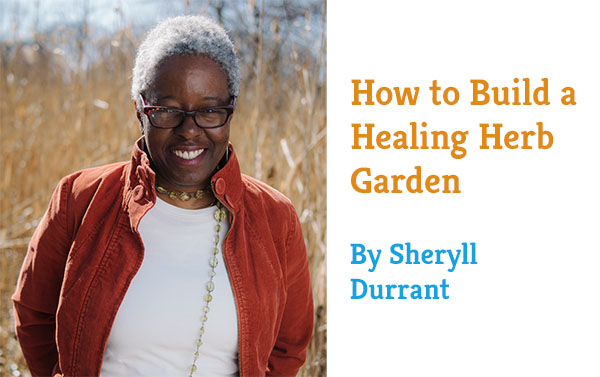Learn from a Leader: How to Build a Healing Herb Garden
Published June 16, 2015
At ioby, we are lucky to be surrounded by experts from across the country. Our ioby Leaders can do some amazing things; They can build bat houses, make beeswax candles, teach kids how to tell stories through dance! And best of all, they’re not stingy with their knowledge. That’s why we want to feature some of our favorite Leaders in a new Learn from a Leader series. We hope you enjoy!
This week, we hear from Sheryll Durrant, urban farmer, educator, master composter, and food justice advocate. She is the director of the urban farm and garden program for Sustainable Flatbush, a 2014 certificate student in Urban Agriculture at Farm School NYC, and a 2013 We Are All Brooklyn Fellow.
Herbs used to occupy a bigger place in our domestic lives—they were used in many home remedies as well as in recipes. Mass-produced medicines have largely displaced herbs as health aids in our society, but there are still many gentle, effective applications for these little green guys. You just have to know how to use them.
- Community Outreach. Start by thinking about who you can “tap into” for this project, and ask how they’d like to help—don’t just assign them a job. Local apothecary Sacred Vibes volunteered to help us decide which herbs to grow and provided education on their uses; a neighborhood carpenter wanted to help us build the raised beds, vertical garden, and containers; a reuse center was glad to donate the wood. Think of who your allies might be and approach them; see if they want to do something to help and what that is. You can’t just go into a neighborhood and build without asking!
- Design. All community gardens in NYC are required to build raised beds; check with your municipality. Get a soil testing kit. Decide if you want to invest in a cold frame to protect your seedlings, how you’ll contain and turn your compost, whether you want a pollinator garden for butterflies, etc. Take an inventory of your needs depending on what you want to plant, how much help you’ll have, and what your space looks like. Then use this info in the next step.
- Budget. Don’t just pull numbers out of a hat! Talk with all your partners about what they’ll be doing and what it will cost. Plug all the time, money, and skill requirements into a spreadsheet and see where your gaps are, then figure out how to fill them. ioby is a great resource for info about budgeting, as they have years of experience realistically planning for projects like these.
- Plan for people. Our herb garden is a gift to our community. For them to enjoy it as much as possible, they have to know its value and how to use it. We really thought about—and again, asked people about—what kinds of workshops would bring the most benefit to our very diverse neighborhood, and came up with a handful of ideas to start. They included one focused on herbs for women, one on kids’ medicine, one about depression, and one for the elderly and their caregivers. The workshops were well-attended, helped people understand our mission, and revived our community’s connection to their neighborhood.
- Promote! We didn’t have the money to print anything, but used social media in every possible way to promote our workshops. We asked all our partners to spread the word through their personal and organizational networks, and used sites like Meetup and Google Groups to reach even further. And remember to always keep your website up to date!
Time/timing:
Start your community outreach in the fall. Plan and design in the winter. Seed in March/April. Our garden took about six months from thinking about it to opening it. It was our goal to open on Earth Day!
Budget:
Ours was $3,000, though costs will vary per project. We got a lot of volunteer labor, but we did pay our carpenter. And we got a lot of materials donated (wood, mulch, plants), but we did buy others, like landscape cloth and our cold frame.
Supplies:
Your particular shopping list will depend on the needs of your specific garden, but a general list would include: non-treated lumber, ground cover, pallets, tools, food-grade cans for pots, rainwater barrels, mulch, organic soil, a work table, seeds, a compost bin, hinges, drawer pulls, and—my favorite—Liquid Nails!
Additional resources:
– More info on our Healing Herb Garden
– Another “Herban” Garden near us
– Reuse centers like Build It Green! in New York
– Your city’s Department of Sanitation (they donated our mulch)
– Volunteer organizations like New York Cares
– Local botanic gardens

